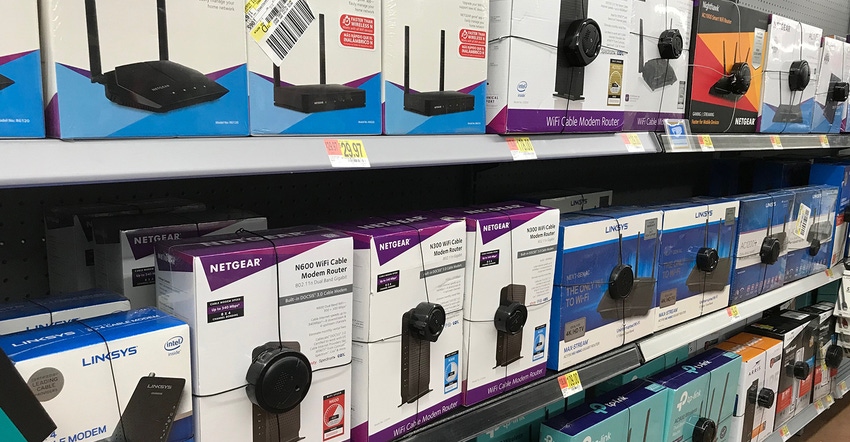
Two stores, an internet search and still no new modem in my home. With the president of the U.S. and the governor of Missouri both pledging financial support for expanding broadband to rural communities, it is hard to fathom when I can’t even purchase a modem to get connected.
I am one of the 80% of Missourians who has high-speed internet access. However, I live in the rural area of southern Warren County, where my provider still uses a phone line for connection. And that modem no longer works.
Cable modems only on store shelves
In an effort to find a new modem, I visited my local Walmart. I headed straight to the electronics section.
There were shelves —top to bottom — full of modems. Some were even modem-router combinations, the kind that allow you to extend your wireless reach throughout the house. Perfect! I put it in the cart.
Halfway to the checkout line, I looked down at the box. “Cable modem,” it read. What? I don’t have cable — shoot, around here you are lucky to get good satellite reception. Back to the electronics department I trudged.
I searched every shelf. There was no modem for phone hookup. I needed a DSL modem. A digital subscriber line, or DSL, modem is a device used to connect a computer or router to a telephone line, which allows you to connect to the internet. After visiting with an employee, I learned I could order one online. Surely, an electronics store would have one in stock.
I headed to the Best Buy in a much larger nearby city. Finally, I found a tag on a shelf for a DSL modem. However, they were out of stock. I didn’t think there was a run on these modems, so I asked an employee to check if there were any in the store. Turns out they no longer stock them in-store. Good news — I could order them online.
With my phone in hand, I searched for modems. The first hit was a cable modem. After altering my search parameters, I found a DSL modem. However, there were not many to choose from.
I headed home to call our service provider. They would rent me another DSL modem or I could purchase one from them.
This excursion brought up a real question about the rural broadband movement — are we investing in an infrastructure we will not be able to access?
Priority on rural infrastructure
Nationally, President Donald J. Trump specifically puts emphasis on investment in rural America. The plan calls for 25% of new federal funds to be dedicated to rural infrastructure needs, as prioritized by state and local leaders. U.S. Secretary of Agriculture Sonny Perdue says part of that funding is for expanding broadband.
“No area of the country needs investment in infrastructure more than rural America,” Perdue says. “With a quarter of the new federal money heading to rural parts of the country, states will have the ability to expand broadband access, increase connectivity, rebuild roads and supply affordable utilities.”
In Missouri, the Missouri Department of Economic Development, in partnership with the Missouri Department of Agriculture, is launching a new statewide initiative to expand broadband infrastructure in unserved and underserved areas. Missouri Gov. Eric Greitens announced that, in cooperation with the state Legislature, private-sector partners and the federal government, Missouri launched a $45 million program that will enable every public school in Missouri to build the infrastructure for high-quality internet access.
Missing pieces
All of this is great progress. Small towns and farming communities need internet access to keep them competing in a global marketplace.
The FCC Broadband Progress Report shows that 1.25 million Missourians — or 20% — don’t have access to high-speed internet (25 mbps/3 mbps). The majority of those citizens live in rural communities. Are companies willing to invest dollars providing equipment for the 20%?
Finding a modem to fit rural America’s needs may be a problem in the future if companies no longer make them. In moving forward, we need to make sure the infrastructure we build to connect rural communities and farms will have the equipment to back it up. Otherwise, we could have broadband lines leading to nowhere.
About the Author(s)
You May Also Like






